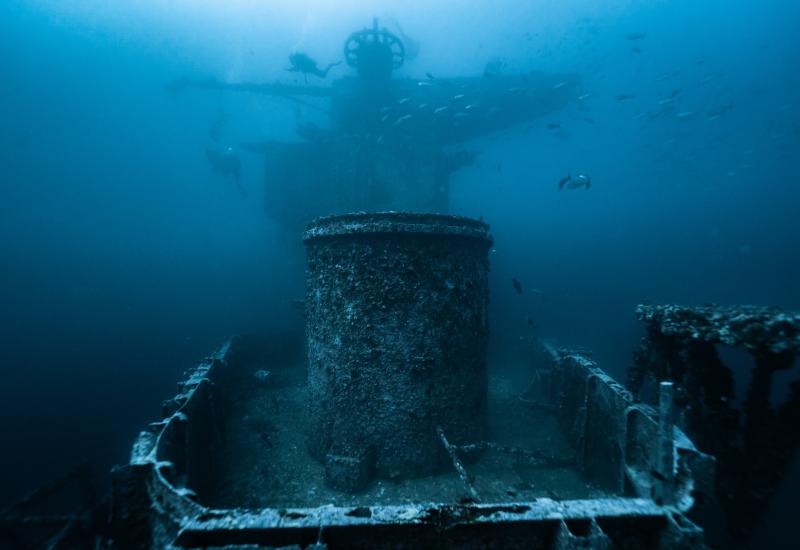Underwater Archaeologists Uncover Evidence of Earliest Humans in North America

Brendan Fenerty/The Center for the Study of the First AmericansDig A Little Deeper
An underwater archaeologist hands up an ancient bone from the Page-Ladson site in Florida's Aucilla River.
Each time divers descended on the Page-Ladson archaeological site, located in the Aucilla River in Florida’s swampy Panhandle, they were overloaded by gear.
Donning cavers’ helmets with lights strapped to them, they followed a down line about 25 feet into Coca Cola-colored water. After reaching the sediment-covered bottom, they clipped their fins onto a loop of rope. Then they made their way to the grid of excavation blocks around which they knelt for one- to three-hour periods, digging with trowels and breathing through an air line system in full scuba gear, just in case.
After logging hundreds and hundreds of dive hours, they found something that would reshape the way people think about human history.
“They were digging with the trowel and one of them hit this … this thing,” says Michael Waters, director of the Center for the Study of the First Americans at Texas A&M University and one of the site’s principal investigators. “And when they uncovered it, it was a bifacial [double-sided] knife.”
One of the divers came blowing to the surface, Waters recalled.
“Get ready,” the diver said. “We think we found something.”
Page-Ladson’s other principal investigator and Waters’ former graduate student, Jessi Halligan, threw on her scuba gear and headed into the water, following the down line until she reached the excavation blocks. There, another diver hovered over the unit to prevent any foreign particles from accidentally being kicked in.
• Related: Unforgettable Wrecks and How They Were Sunk
“As I get closer, his light’s glowing and he kind of backs away from the unit with the light on the knife, so I see it sitting there,” Halligan says.
She was in disbelief.
“The whole time I’m taking off my fins and getting in the unit I’m like, ‘This really can’t be happening,’” she recalls.
But when she approached the knife, she knew they had finally found what they were searching for: solid evidence of human civilization that dates back 14,500 years — about 1,500 years earlier than science had previously proved man’s existence in the New World.
“We’re trying to hug underwater with full scuba gear on and the hookah setup and all of this stuff,” she says. “It probably looked like some ‘Teletubby’ dance, but we we’re doing this hug thing but trying not to mess anything up at the same time because we were so, so excited.”
It all began back in the 1980s, when archaeologists found a marked mastodon tusk and fragments from the manufacturing of stone tools at the Page-Ladson site. The finds were regarded by the scientific community as ambiguous evidence of civilization.
For half a century it had been assumed that the Clovis people — skilled hunters famous for their distinctive fluted spear points — were the first to migrate to North America, roughly 13,000 years ago.
“Basically, people said, ‘Oh, interesting, but we can’t be positively sure,’” Halligan says of the discoveries in the 1980s. So Waters’ team, armed with the latest dating tools and techniques, decided to revisit the site in 2012. “What we found when we went back was this stone knife,” says Halligan. “It has to have been made by people. That can’t occur naturally.”
While more research remains to determine how ancient people found their way to Florida’s Panhandle, Halligan offers advice to divers.
“When you pick things up off a wreck or you pick things up off the bottom of the ocean or off the bottom of a river, it maybe doesn’t seem like it’s a big deal,” she says. “And sometimes, it isn’t a big deal — but sometimes it really could completely change what we’re able to find out.”









